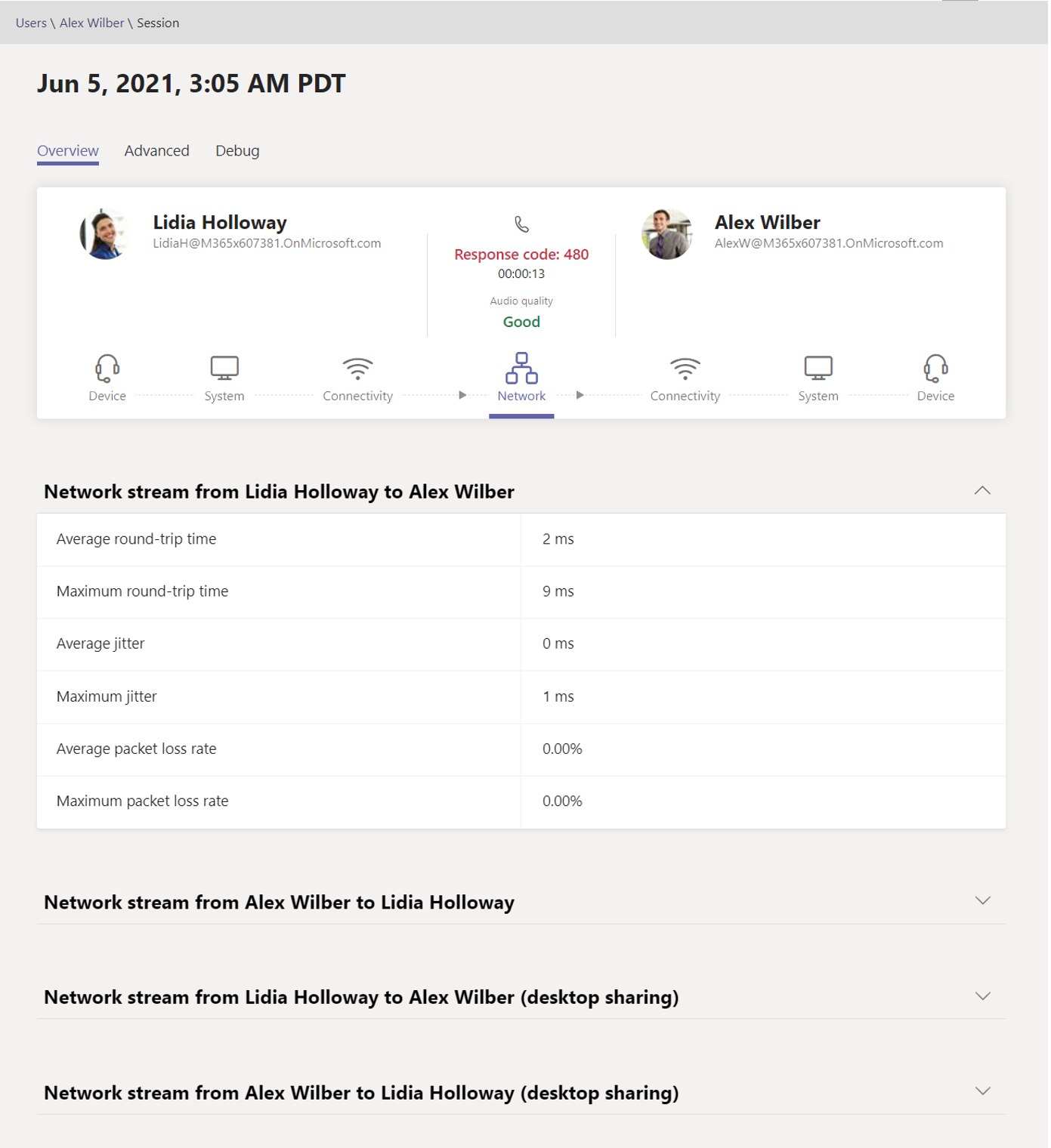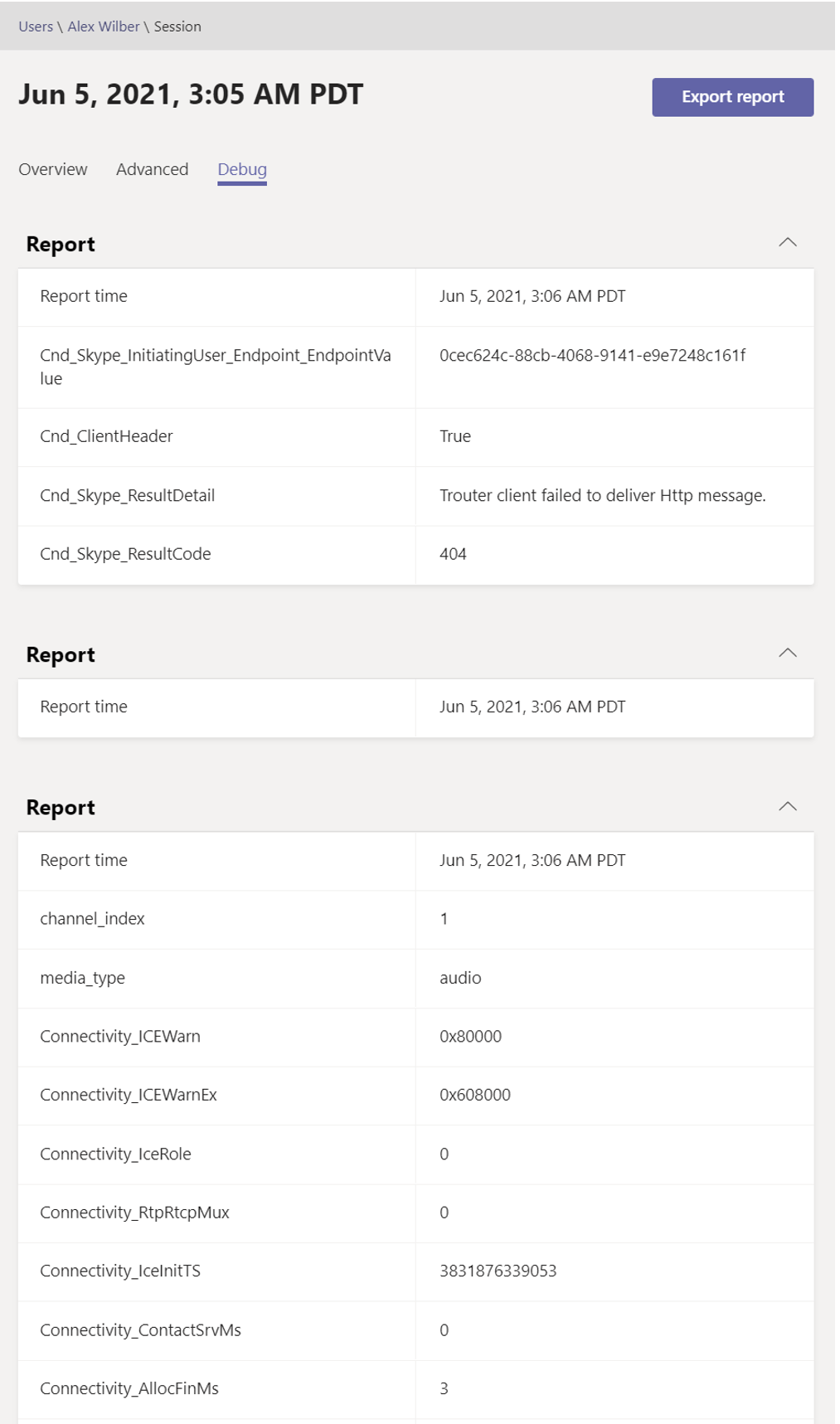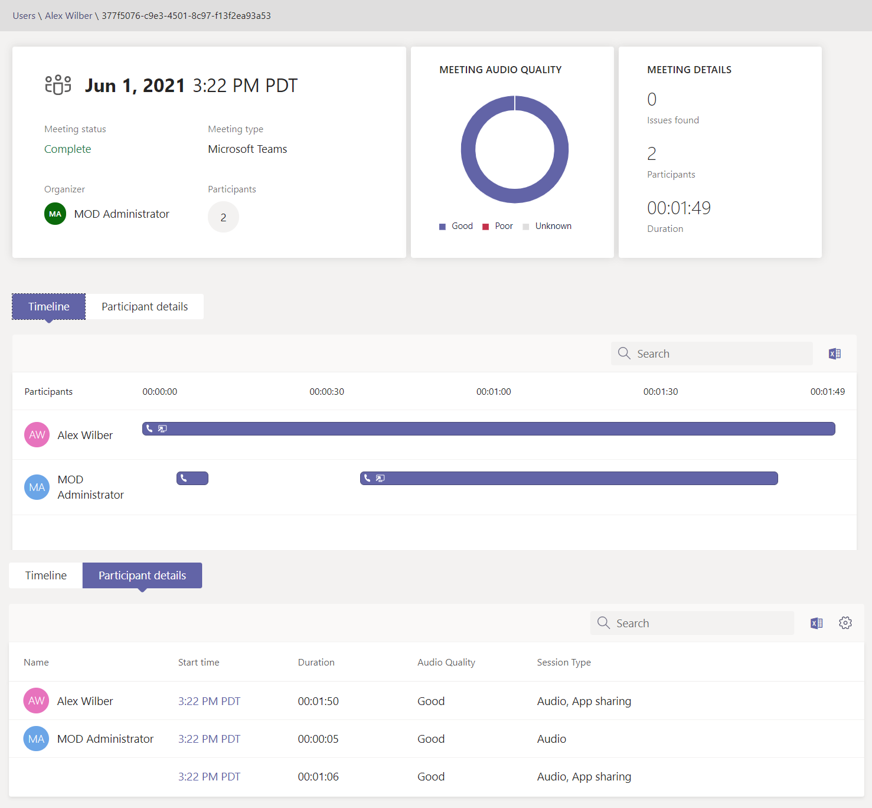Identify issues with call analytics
Call analytics can help organizations troubleshoot call and connection problems with Microsoft Teams. Call Analytics shows detailed information about the devices, networks, and connectivity for the calls and meetings of each user in an organization's Microsoft 365 tenant. If Call Analytics includes building, site, and tenant information, this information will also be shown for each call and session. Information available through Call Analytics can help an organization's Teams administrator determine why a user had a poor call or meeting experience.
Permissions to access call analytics
Teams administrators and Teams communication administrators have full access to all the features of Call Analytics and the Teams admin center. An organization can assign the following Microsoft Entra roles to support staff and Helpdesk agents so they can also access per-user call analytics (without having access to the rest of the Teams admin center):
Teams communication support specialist role: This role has a limited view of Call Analytics. Communication support specialists handle basic call-quality problems. They don't investigate issues with meetings; instead, they collect related information and then escalate to a communication support engineer. The communication support specialist role is equivalent to Tier 1 support.
Teams communication support engineer role: This role has access to the full functionality of Call Analytics. Communication support engineers see information in detailed call logs that is hidden from communication support specialists. Users in this role can help troubleshoot problems with both calls and meetings. The communication support engineer role is equivalent to Tier 2 support.
The following table identifies the per-user information that's available for each communications support role.
| Activity | Information | What the communications support specialist sees |
What the communications support engineer sees |
|---|---|---|---|
| Calls | Caller name | Only the name of the user the agent searched for. | User name. |
| Recipient name | Shows as Internal User or External User. | Recipient name. | |
| Caller phone number | Entire phone number except last three digits are obfuscated with asterisk symbols. For example, 15552823***. | The entire phone number except the last three digits are obfuscated with asterisk symbols. For example, 15552823***. | |
| Recipient phone number | Entire phone number except last three digits are obfuscated with asterisk symbols. For example, 15552823***. | The entire phone number except the last three digits are obfuscated with asterisk symbols. For example, 15552823***. | |
| Call Details > Advanced tab | Information not shown. | All details are shown, such as device names, IP address, subnet mapping, and more. | |
| Call Details > Advanced > Debug tab | Information not shown. | All details shown, such as DNS suffix and SSID. | |
| Meetings | Participant names | Only the name of the user the agent searched for. Other participants identified as an Internal User or External User. | All names shown. |
| Participant count | Number of participants. | Number of participants. | |
| Session details | Session details shown with exceptions. Only the name of the user the agent searched for is shown. Other participants are identified as an Internal User or External User. The last three digits of the telephone number are obfuscated with asterisk symbols. | User names and session details are shown. The last three digits of the telephone number are obfuscated with asterisk symbols. |
View the call analytics for a user
Complete the following steps to view the call analytics for a user:
Sign into Microsoft Teams admin center.
From the left-hand navigation pane, select Users > Manage Users, and then select a user.
On the User page, select Meetings & calls.
Call analytics displays all calls and meetings for that user for the past 30 days.
By selecting a session, you can view other information about a given session, including detailed media and networking statistics.
In the session details for each call or meeting, minor issues appear in yellow. An issue highlighted in yellow indicates it's outside the normal range and may be contributing to the problem, but it's unlikely to be the main cause of the problem. An issue highlighted in red indicates it's a significant problem, and it's likely the main cause of the poor call quality for this session.
Call analytics for calls
Complete the following steps to view the call analytics for a call:
On the user's Meetings & calls page, select a session with a Call activity type.
In the Overall call analytics page, you can select different phrases for more detailed information.

Select the Advanced or Debug tabs, and then look for yellow and red items that indicate poor call quality or connection problems.
Advanced tab

Debug tab

Call analytics for meetings
Complete the following steps to view the call analytics for a meeting:
On the user's Meetings & calls page, select a session with a conference activity type to review the call analytics for meetings.
Select the Timeline or Participant details tabs for more information about the meeting.

Rarely is quality of experience data not received for audio sessions. When this situation does occur, it's usually the result of the call dropping and connection with the client ending. When this situation occurs, the session rating is unavailable.
For audio sessions that do have quality of experience (QoE) data, the following table describes major issues that qualify a session as poor.
| Issue | Area | Description |
|---|---|---|
| Call setup | Session | The error code Ms-diag 20-29 indicates the call setup failed. The user couldn't join the call or meeting. |
| Audio network classified poor call | Session | Network quality issues (such as packet loss, jitter, NMOS degradation, RTT, or concealed ratio) were encountered. |
| Device not functioning | Device | A device isn't functioning correctly. Device not functioning ratios are: - DeviceRenderNotFunctioningEventRatio >= 0.005 - DeviceCaptureNotFunctioningEventRatio >= 0.005 |
